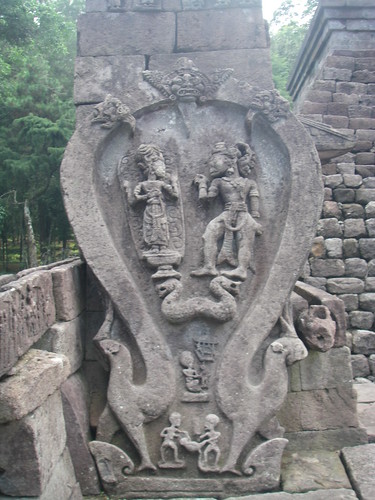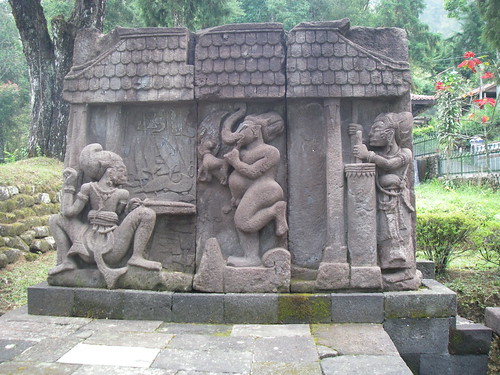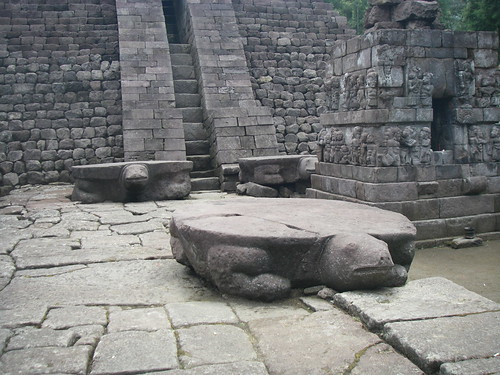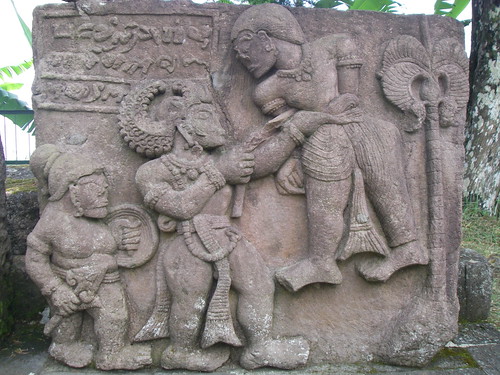
I was recently holidaying in central Java and one “ancient” temple I had hoped to see was Candi Sukuh. I had heard it was very different from the usual run of the mill temple complexes at Borobudur and Prambanan, which I also had to see of course, and I hoped a first-hand look would help me understand a little more about the culture and people that built it, and a little more about what we (humanity) are.

I had not realized that there was more to Jogyakarta than Borobudur and Prambanan. There were also other smaller but no less interesting temples (candi) – Plaosan and Sewu. And nearby Solo’s Candi Sukuh was neighboured by a somewhat similar Candi Ceto. It will take me time to sort out and label the photos I took of all of these, but I have completed my Flickr set of the Sukuh photos.
Some of my labels and descriptions are really questions begging for more knowledgable persons to enlighten me to the meanings and stories behind them.
It was no easy task finding and reaching the Sukuh temple. The locals I asked at Jogyakarta seemed never to have heard of it. At one point I was told to change buses just outside the city, but there I was put on a bus that returned me to my starting point! Another generously took me on his motorcycle to what he thought was where I wanted to go, but I had to tell him he had taken me to the wrong temple. Finally I was told that the temple I wanted to see was way over in east Java towards Bali, and it was impossible to see it from Jogyakarta.
After all that I finally gave up any hope of seeing it, but a chance meeting at the Prambanan complex with an architecture student from Solo university was my lucky breakthrough. I owe Vava much — he very kindly offered to take me out to the sites on his motorcycle the next day. All I had to do was catch a train from Jogyakarta to Solo and meet him the following morning. I drove him mad with my incessant photographing, I’m sure. But he was responsible for the best part of my holiday, enabling me to see not only temple complexes too rarely seen (or even known) by outsiders, but also so much of the central Java countryside and people.
A major feature of the Candi Sukuh complex, a two-meter high phallus or lingga, has been removed and placed out of public view in a back workroom of the National Museum. At first I thought it might be on display in the museum, but I soon had doubts about that when I visited the museum to find it quite small and flooded throughout with classes of happily noisy and mobile young schoolchildren. But I eventually found the two-meter lingga through a smudgy window to an out-of-bounds workroom.
Presumably, Muslim sensibilities are at work here, both at the official and local levels.
But the temple does certainly raise interesting questions about our religiosity when contrasted with the far more modest and widely known temple complexes of central Java. The similarity with the Mayan structures is also remarkable.
My Candi Sukuh photos are now on Flickr. Links to Wikipedia and other information about the temple are also included there.
A few of them here —






